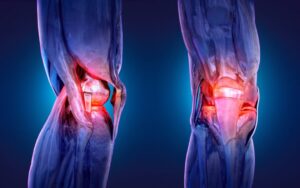Building upon the foundational understanding of traditional vehicle strategies such as green waves and game-theoretic approaches, modern urban traffic management is rapidly evolving through the integration of advanced technologies and artificial intelligence (AI). These innovations aim to create smarter, more adaptive systems that respond dynamically to the complexities of city mobility. As urban centers grow denser and traffic patterns become more unpredictable, it is essential to explore how digital tools are transforming traffic flow optimization from static, rule-based methods to real-time, data-driven solutions.
2. AI-Powered Traffic Signal Control: Moving Beyond Fixed Green Waves
3. Predictive Analytics and Traffic Forecasting: Anticipating Congestion Before It Happens
4. Connected Vehicles and Vehicle-to-Everything (V2X) Communication Technologies
5. Intelligent Traffic Management Systems: Integrating Multi-Modal Data and AI
6. Non-Obvious Aspects: Ethical, Privacy, and Equity Considerations in AI-Driven Traffic Systems
7. Future Trends: Autonomous Vehicles and Their Role in AI-Optimized Traffic Systems
8. From AI to Green Strategies: Reinforcing Traditional Methods with Advanced Technology
9. Conclusion: Bridging the Gap Between Traditional Vehicle Strategies and Cutting-Edge Technology
1. The Role of Real-Time Data Collection and Sensor Networks in Modern Traffic Systems
The transition from static traffic management strategies to dynamic, data-driven systems hinges on the deployment of sophisticated sensor networks and real-time data collection methods. These technologies provide continuous streams of information, enabling traffic managers to understand and respond to evolving conditions with unprecedented precision.
a. Types of sensors and data sources (cameras, inductive loops, connected vehicles)
Modern traffic systems utilize a variety of sensors, including high-resolution cameras for vehicle counts and license plate recognition, inductive loops embedded in roadways to measure vehicle presence, and connected vehicles that transmit real-time location and speed data. Additionally, emerging sources such as drone surveillance and environmental sensors contribute to a comprehensive data ecosystem. For example, cities like Singapore have integrated these sensors into a unified platform that monitors traffic flow in real time, significantly reducing congestion during peak hours.
b. How real-time data enhances understanding of traffic dynamics beyond green waves
While green waves optimize traffic flow by synchronizing signals along corridors, real-time data allows traffic systems to adapt instantly to incidents, weather conditions, and fluctuating demand. This granular insight enables algorithms to adjust signal timings dynamically, reroute vehicles proactively, and prevent bottlenecks before they escalate. A case in point is Los Angeles’ adaptive traffic control system, which uses live data to reduce average travel times by up to 25% during rush hours.
c. Challenges in data accuracy, privacy, and infrastructure deployment
Despite technological advancements, challenges persist. Ensuring data accuracy requires calibration and maintenance of sensors, while privacy concerns necessitate anonymization protocols to protect individual identities. Infrastructure deployment, especially in historic or densely built urban areas, can be costly and complex. Balancing these factors is essential for developing resilient, equitable traffic management systems.
2. AI-Powered Traffic Signal Control: Moving Beyond Fixed Green Waves
Artificial intelligence introduces adaptability into traffic signal control, enabling systems to respond dynamically to real-time conditions. Machine learning algorithms analyze vast amounts of data to optimize signal timings, reducing stops and delays while improving overall flow.
a. Machine learning algorithms for adaptive signal timing
Algorithms such as reinforcement learning and neural networks process inputs like vehicle queues, pedestrian crossings, and incident reports to determine optimal signal phases. For instance, the SCOOT (Split Cycle Offset Optimization Technique) system used in London continuously adjusts traffic lights, achieving a 15-20% reduction in congestion during peak periods.
b. Case studies of AI-enabled traffic lights reducing congestion
In Barcelona, an AI-driven traffic management platform decreased average congestion duration by 18%, improved air quality, and enhanced safety. Similarly, in Pittsburgh, adaptive signals coordinated through AI reduced travel times by 12%, demonstrating the tangible benefits of intelligent control systems.
c. Benefits over traditional green wave systems in dynamic urban environments
Unlike fixed green waves, which are effective primarily under predictable conditions, AI-controlled systems can adapt to real-time fluctuations, incidents, and event-based demands. This flexibility ensures optimal flow even in unpredictable situations, making cities more resilient and responsive.
3. Predictive Analytics and Traffic Forecasting: Anticipating Congestion Before It Happens
Harnessing historical data combined with real-time inputs, predictive analytics enable urban planners and traffic managers to foresee congestion patterns and act proactively. This shift from reactive to proactive management transforms traffic systems into anticipatory networks.
a. Using historical and real-time data for traffic pattern prediction
By analyzing decades of traffic flow data alongside current conditions, machine learning models can identify recurring congestion hotspots, peak hours, and the impact of special events. For example, New York City’s congestion prediction models successfully forecasted disruptions during major events, allowing preemptive rerouting and resource allocation.
b. Integration with AI to forecast congestion and optimize routes proactively
Real-time data feeds into AI models that generate congestion forecasts seconds to hours ahead. Navigation apps like Waze and Google Maps leverage these insights to suggest alternative routes, distributing traffic more evenly and preventing gridlock.
c. Impact on urban planning and emergency response strategies
Predictive analytics inform infrastructure investments, signal timing plans, and emergency response deployment. For instance, during natural disasters, accurate forecasts enable authorities to clear routes efficiently, safeguarding lives and reducing economic losses.
4. Connected Vehicles and Vehicle-to-Everything (V2X) Communication Technologies
The advent of connected vehicle technology facilitates seamless communication between vehicles and infrastructure, augmenting traffic management capabilities and enabling coordinated, safe, and efficient mobility.
a. How connected vehicle data complements traffic management systems
Connected vehicles transmit real-time data such as speed, position, and intended maneuvers, enriching the traffic data landscape. This granular information allows traffic control centers to adjust signals, allocate lanes, and manage congestion more precisely. For example, in Stockholm, connected vehicle data contributed to a 10% reduction in travel time during peak hours.
b. Enhancing traffic flow through coordinated vehicle behavior
V2X communication supports cooperative adaptive cruise control, platooning, and synchronized movements, reducing stop-and-go waves. These strategies not only improve throughput but also cut emissions and fuel consumption, as shown in pilot projects across the Netherlands.
c. Potential for reducing accidents and improving safety alongside flow optimization
By sharing intent and hazard warnings, connected vehicles can prevent collisions, especially at intersections and during lane changes. The integration of V2X with AI traffic systems creates a safer environment without compromising flow efficiency.
5. Intelligent Traffic Management Systems: Integrating Multi-Modal Data and AI
Achieving holistic urban mobility requires integrating diverse data streams—public transit schedules, pedestrian movement, bicycle traffic—and applying AI to coordinate across modes effectively.
| Data Source | Role in Traffic Optimization |
|---|---|
| Public Transit Schedules | Align signals to prioritize buses, reduce wait times, and improve reliability |
| Pedestrian and Cycling Data | Adjust crossing signals and lane allocations to enhance safety and flow |
| Connected Vehicle Data | Enable real-time adjustments and cooperative maneuvers |
a. Incorporating public transit, pedestrian, and cycling data into traffic control
Smart traffic systems integrate multiple data streams into AI algorithms that dynamically optimize signals and routing. For example, in Copenhagen, synchronized traffic lights prioritize cyclists during rush hours, encouraging sustainable mobility and reducing vehicle congestion.
b. AI-driven multi-modal optimization for holistic urban mobility
Machine learning models analyze data from all modes to recommend coordinated schedules, reroute vehicles, and adapt infrastructure usage. This approach reduces overall congestion and makes urban transportation more resilient to disruptions.
c. Case examples of integrated systems improving overall urban traffic efficiency
In Singapore, the Land Transport Authority’s integrated Traffic Signal Control System combines data from buses, bicycles, pedestrians, and vehicles, resulting in a 20% improvement in traffic flow and a significant increase in public transit punctuality.
6. Non-Obvious Aspects: Ethical, Privacy, and Equity Considerations in AI-Driven Traffic Systems
While technological advancements offer substantial benefits, they also raise important questions about ethics, privacy, and social equity. Addressing these concerns is essential for sustainable and inclusive urban mobility.
a. Ethical implications of pervasive surveillance and data collection
Continuous tracking of vehicles and pedestrians can lead to privacy infringements if not managed responsibly. Implementing anonymization protocols, transparent data policies, and public engagement are crucial to maintaining trust. As noted by privacy advocates, “Technological progress must be balanced with respect for individual rights.”
b. Ensuring equitable access to optimized traffic solutions across diverse populations
Smart systems should serve all urban residents, including marginalized communities. This involves avoiding digital divides and ensuring that benefits such as reduced congestion and improved safety are accessible to everyone, regardless of socioeconomic status.
c. Balancing technological advancement with social responsibility
Urban planners and policymakers must weigh the advantages of AI and sensor networks against potential social costs, fostering inclusive design and equitable distribution of infrastructure improvements.
7. Future Trends: Autonomous Vehicles and Their Role in AI-Optimized Traffic Systems
The integration of autonomous vehicles (AVs) into AI-enabled traffic ecosystems promises a paradigm shift in urban mobility, with potential for unprecedented efficiency and safety. As AVs become more prevalent, their interaction with existing traffic management systems will redefine flow patterns.
a. How autonomous vehicles will interact with AI traffic management
AVs equipped with V2X communication will coordinate with traffic signals and other vehicles, enabling smooth platooning and lane management. For example, in Phoenix, pilot programs demonstrate AVs adapting seamlessly to adaptive traffic signals, reducing travel times and emissions.
b. Potential shifts in traffic flow paradigms with increased automation
Automation allows for the consolidation of trips, optimized routing at the network level, and shared vehicle fleets, reducing car ownership and congestion. Models suggest that with widespread AV adoption, peak-hour congestion could decrease by up to 40%, transforming urban landscapes.
c. Challenges and opportunities in integrating autonomous vehicles into existing systems
The transition requires robust infrastructure, regulatory frameworks, and cybersecurity measures. Opportunities include coordinated fleet management, improved safety, and environmental benefits. However, issues such as mixed traffic scenarios and ethical dilemmas in decision-making algorithms must be addressed.
8. From AI to Green Strategies: Reinforcing Traditional Methods with Advanced Technology
Advanced technology does not replace traditional green strategies; instead, it enhances and amplifies their effectiveness. Integrating AI-driven timing adjustments with green wave principles creates synergistic effects that advance sustainable urban mobility.
a. Enhancing green wave strategies through AI-driven timing adjustments
AI algorithms analyze live traffic data to fine-tune green wave timings, accommodating fluctuations and incidents in real-time. This approach ensures that the energy savings and reduced emissions associated with green waves are maximized even under unpredictable conditions.
b. AI-supported game theory applications for cooperative vehicle behavior
Game theory models, powered by AI, facilitate cooperative strategies among vehicles, encouraging behaviors such as platooning and priority passing. This cooperation results in smoother flow, fewer stops, and lower emissions, aligning traditional tactics with modern technological capabilities.
c. Synergizing old and new approaches for sustainable urban traffic flow
By merging time-tested green wave principles with

